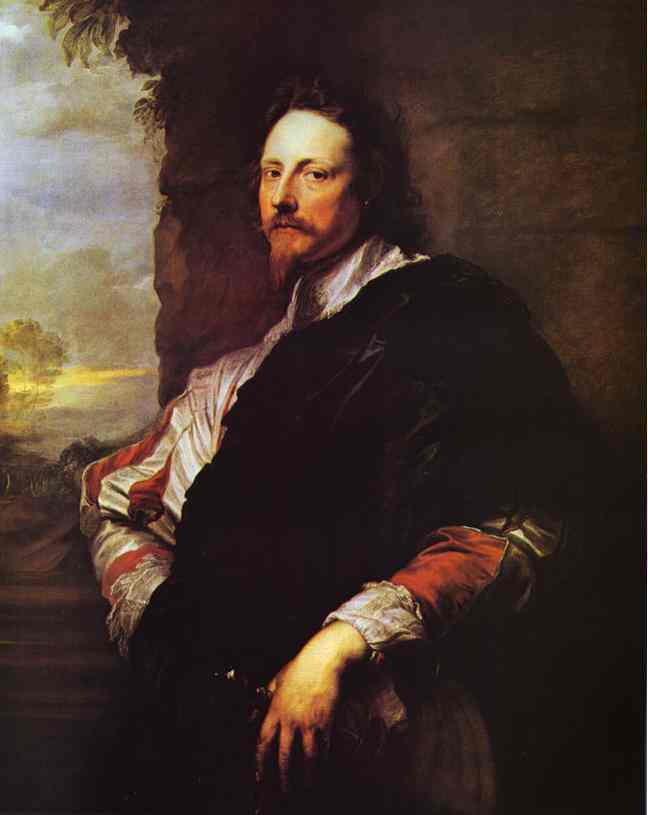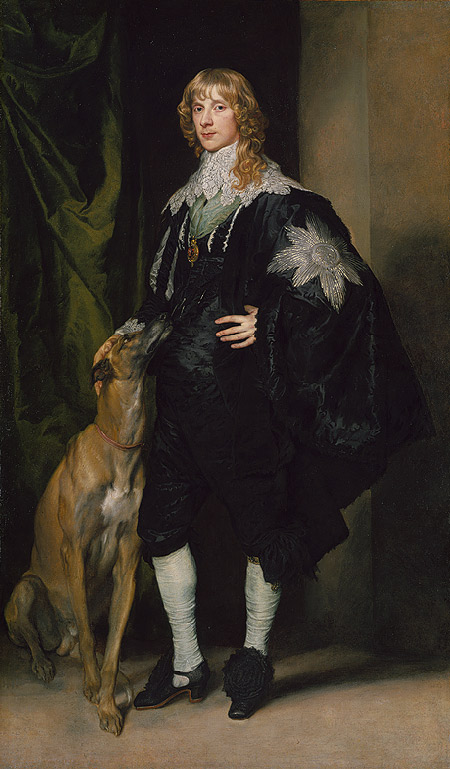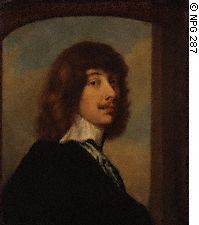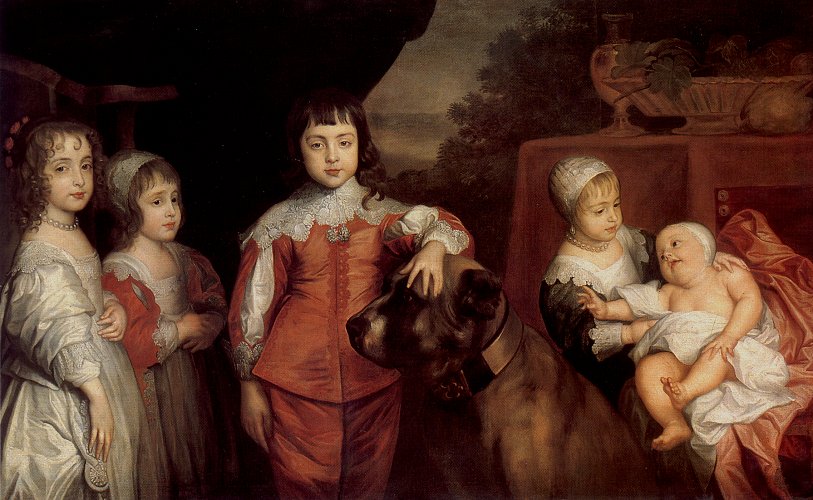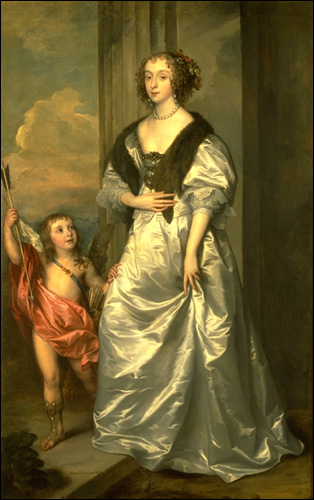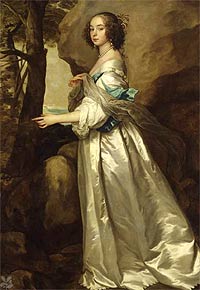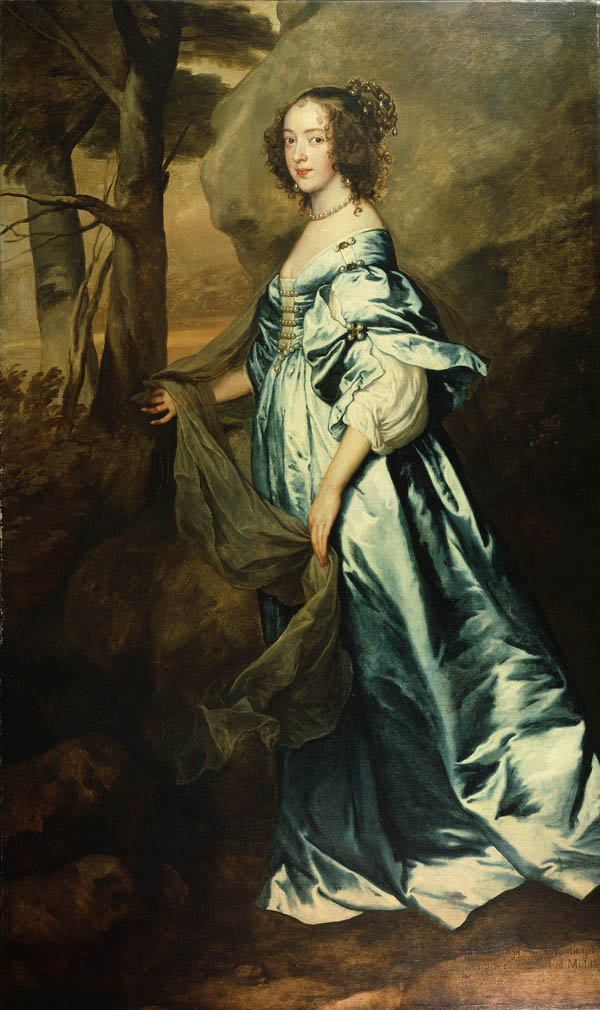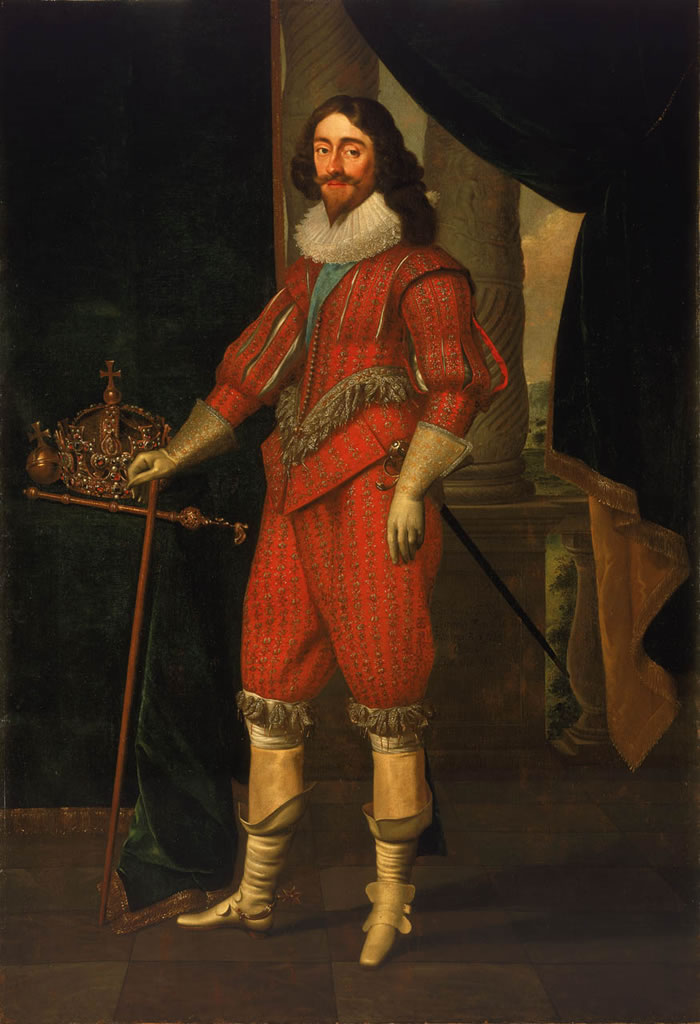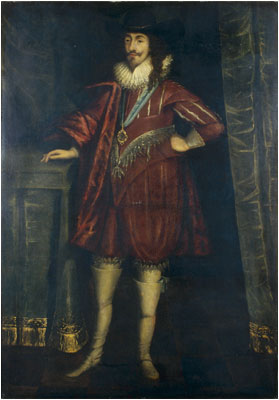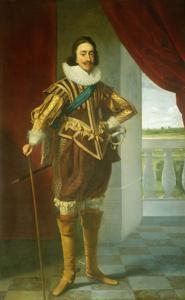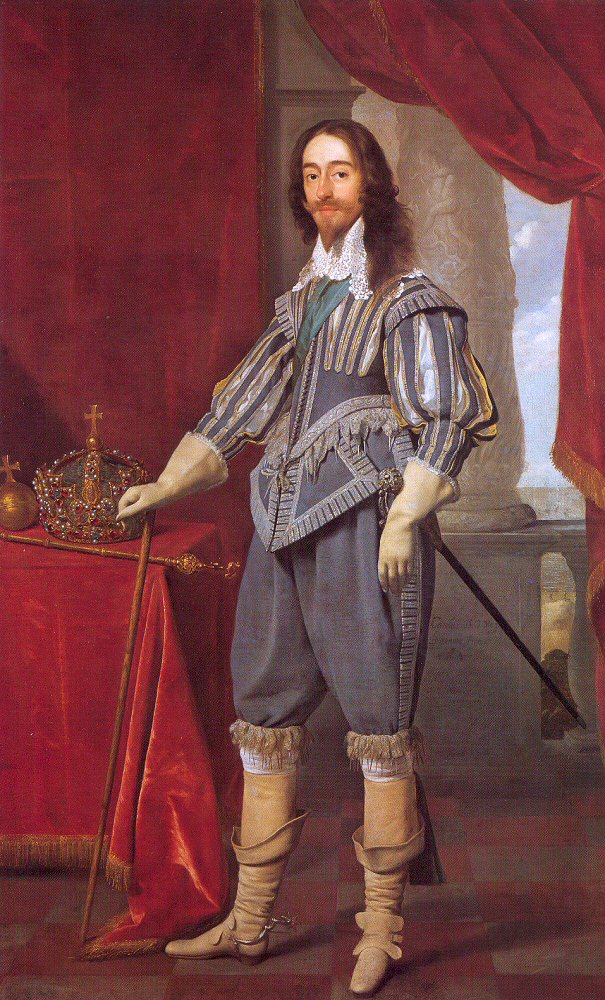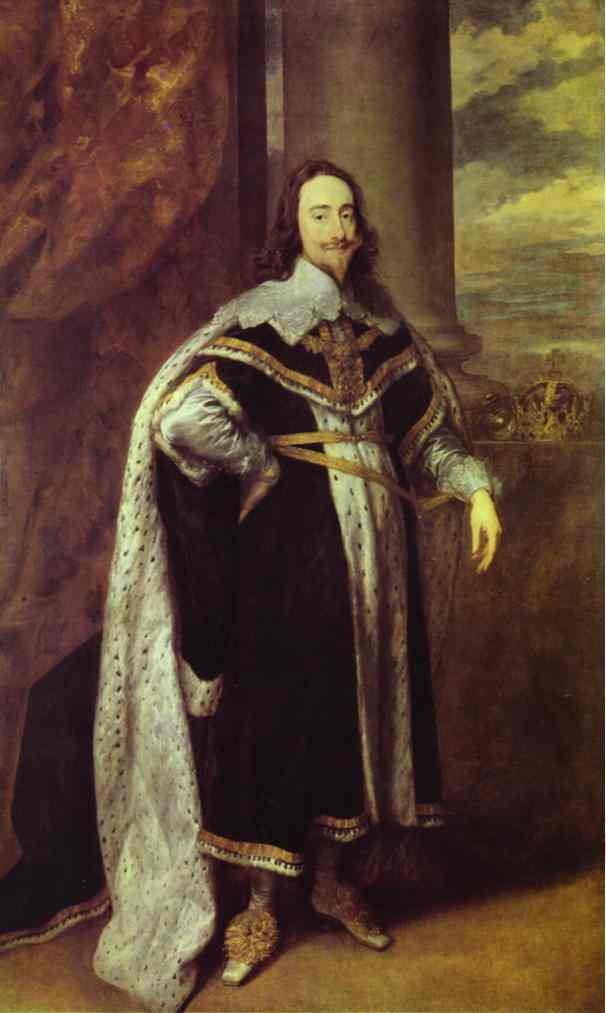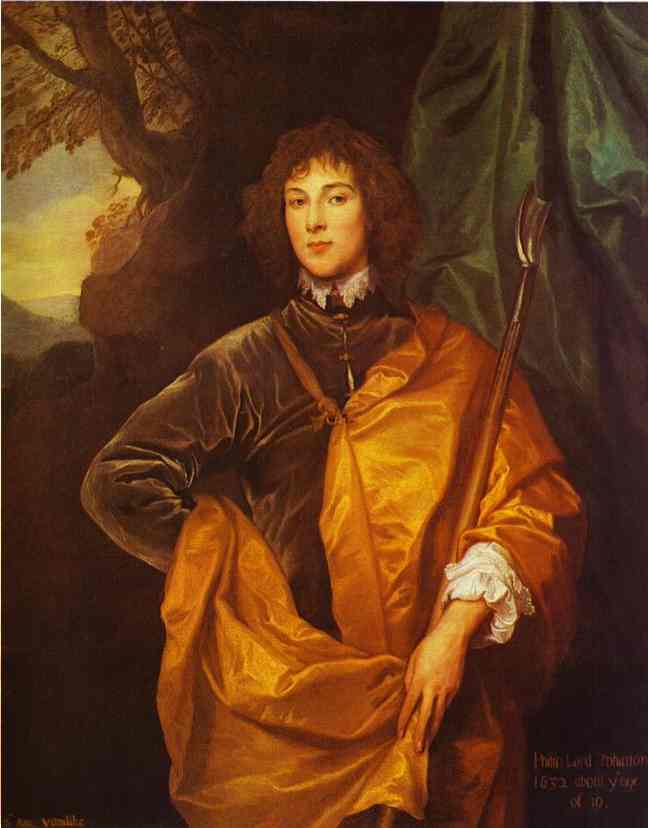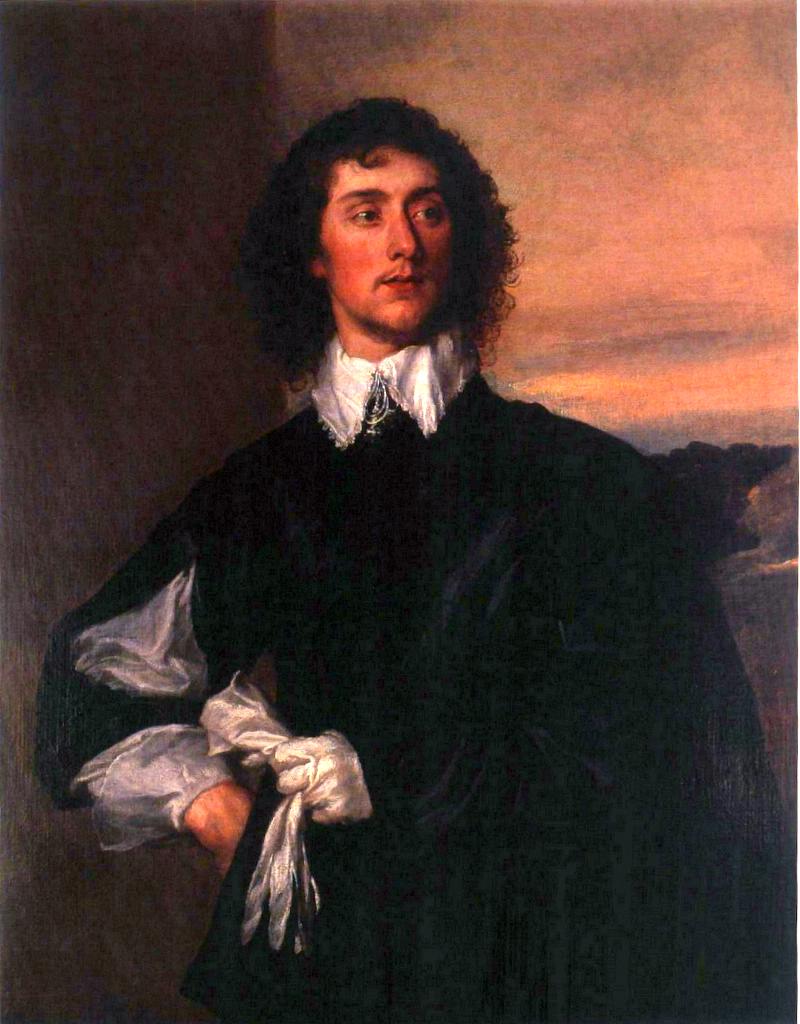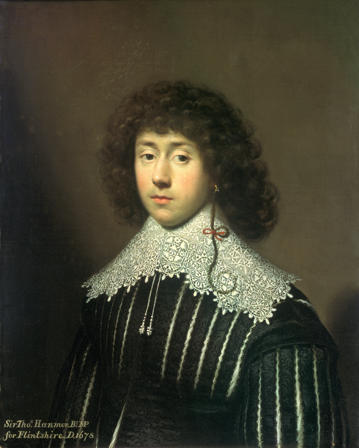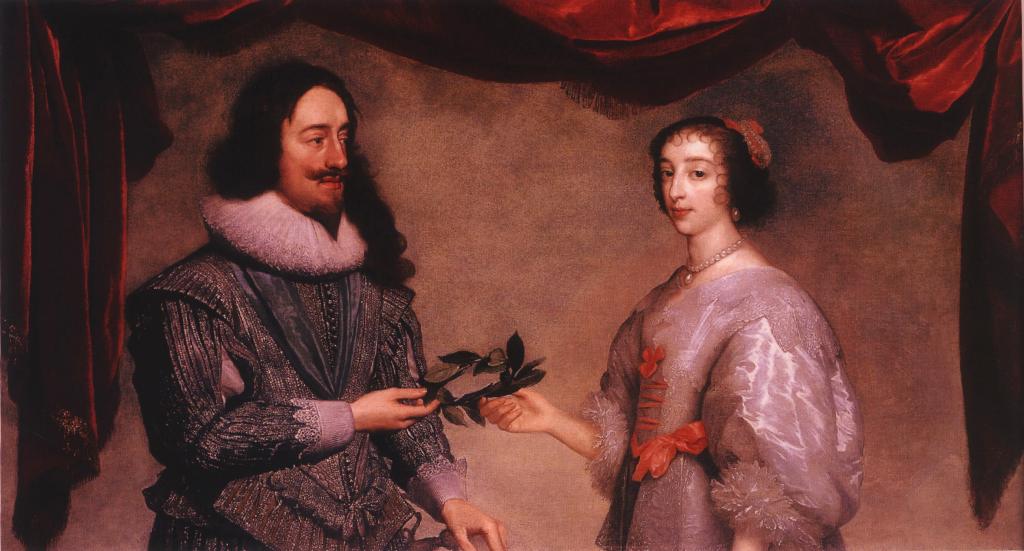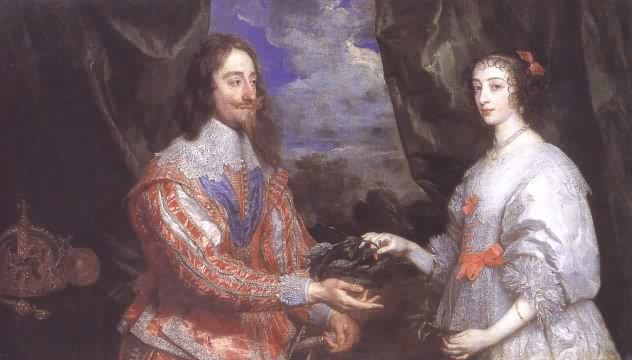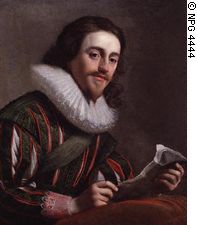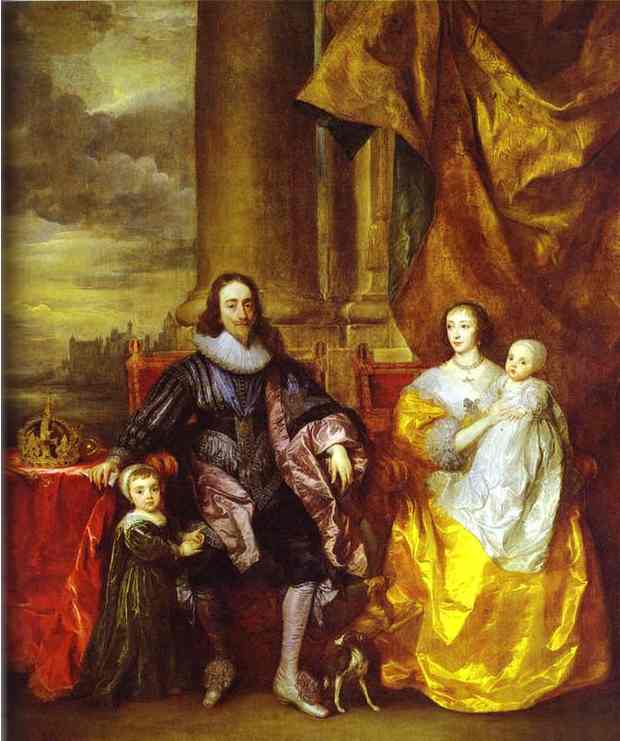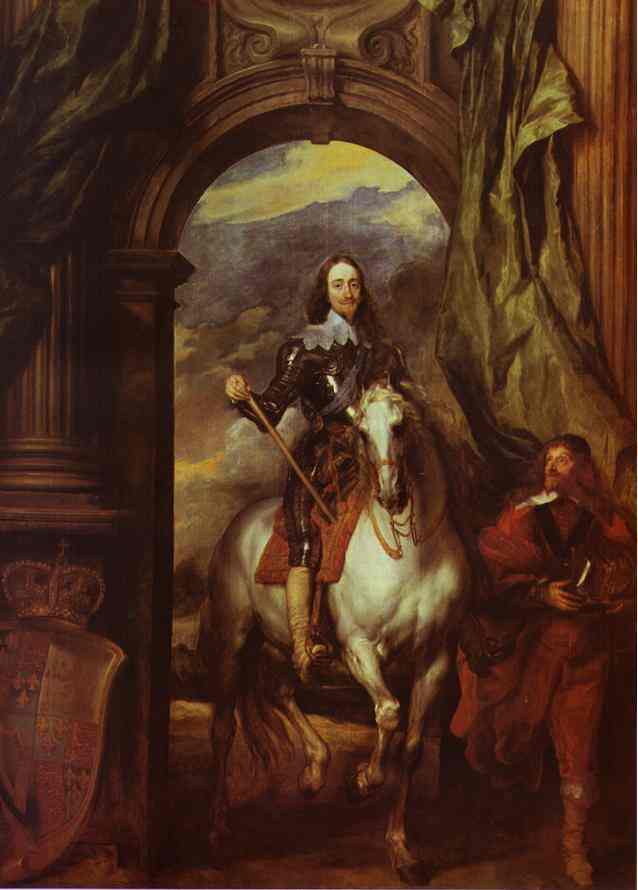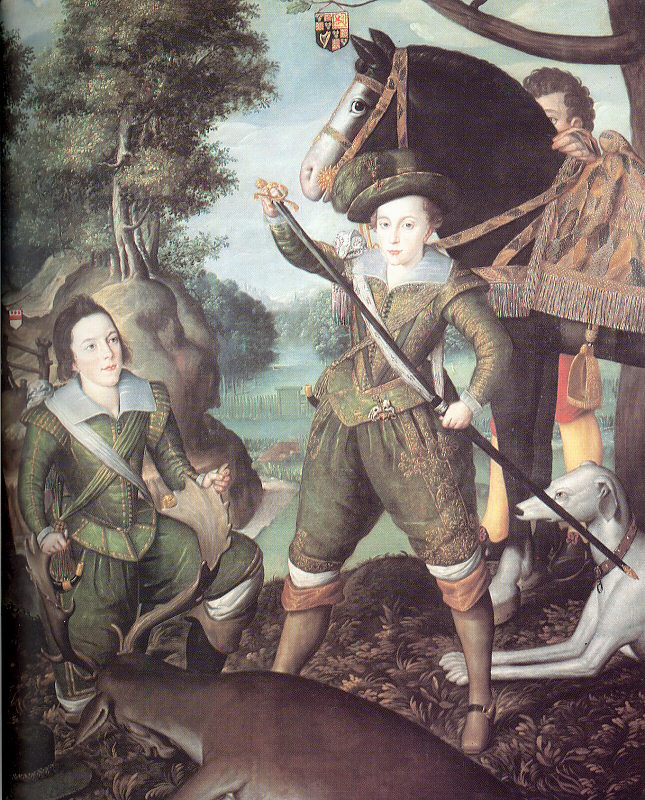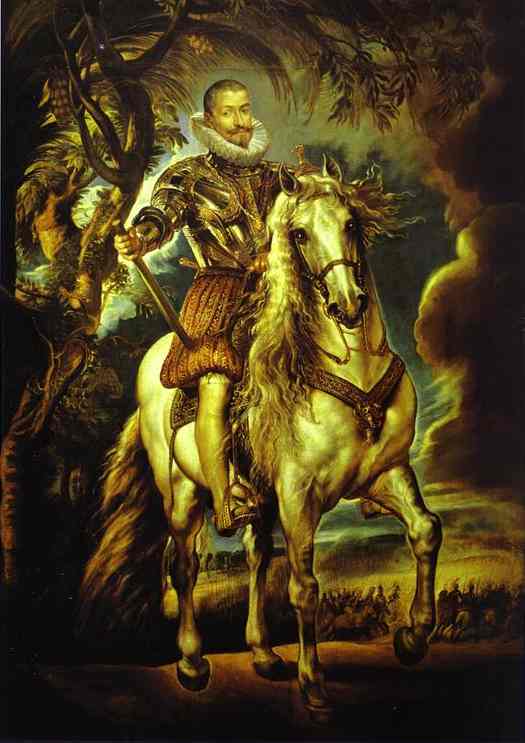The Royal Portraits
Nicholas Lanier, 1628. Van Dyck took seven days to produce this work and it presented to Charles I who kept it. We have the preparatory drawings unusually as Van Dyck did not often use them. It is clear from the sketch that he only used it to work out the pose.
Nicholas Lanier, sometimes Laniere (baptised at Greenwich 10 September 1588 – 24 February 1666) was an English composer, singer, lutenist and painter. He became Master of the King’s Music.
Duke of Richmond and Lennox, 1637-9 (New York). There is also a sketch of the dog. There is another Van Dyck at Kenwood House of the Duke of Richmond but chopped in half and changed colour. For a royal portrait the king would want to use a workshop that could produce identical copies of fresh looking portraits. See (1) in handout from a Parisian who sat for Van Dyck and describes his painting process. He never painted for more than an hour at a time and had many paintings on the go at the same time. He sketched for 15 minutes and then gave it to assistants to paint the clothing and he then painted the finishing touches. He used people who modelled for hands. But was he exaggerating? Did he always work like this throughout his career? An original Van Dyck jumps off the wall at you when you visit a country house.
Algernon Percy at Alnwich Castle, Northumberland (pronounced “annick”). Van Dyck does not make detailed sketches of the head. Holbein does. So how did Van Dyck make copies? It could be in oil sketches but only a few survive, e.g. two of Charles children, Elizabeth and Ann.
Charles I children, Charles II and his Siblings, 1639. Countess of Peterborough, 1630s, private collection.
Lady Mary Villiers, 1630s, shows the same pose. Sometimes the folds of the dress are repeated. The body is effectively copied. We have a Van Dyck sketch of a ladies dress. The background is reversed. There are another two or three similar ladies, e.g.
Countess of Dorset
Countess Clanbrassil. All the poses and background are very similar. Did they ask for the same pose? They all knew each other, visited and all had to have a Van Dyck done so they may have asked for a pose like the one they had seen. They would all go to see Van Dyck at Blackfriars. Rocks figure in male and female portraits and they could have a meaning (constancy) but we have lost it. Also the background for masque costumes is sometimes pastoral. Sometimes he uses urns. We have two or three watercolour paintings by Van Dyck of the English countryside in the British Museum.
Royal Portraiture
1625 Charles I succeeded to the throne
Mytens, Charles I, Parum House
Mytens, Charles I
Mytens, Charles I, Royal Collection, all before he became king, about 1623, and all a similar pose. In 1623 Charles I returned from Spain after a hair brained scheme to woo the Infanta. One of the above portraits was sent to Spain.
Mytens, Charles I, when king 1631 (National Portrait Gallery), note the crown on the table. Two years after Van Dyck comes for a second time in 1632 Mytens leaves.
Van Dyck, Charles I, 1636 in his robes of state (Royal Collection). We will look at Charles I inventory when we look at collecting. It tells us it was displayed on the Cross Gallery at Somerset House, the residence of Henrietta Maria. It became clear to Chrales quickly that he preferred to use Van Dyck rather than Mytens. The Mytens is flattened and the Van Dyck is as if seen through a wide angle lens, note we look down on his feet and upto his head. The Van Dyck is grander, nonchalant. The Mytens is diffident, perhaps more of a true likeness (short, tentative and diffident, with a stammer). He was overshadowed by his charismatic brother Henry. In the Van Dyck the pillar frames his head. Van Dyck had been to Italy and Mytens had not. The king has a fashionable melancholic look in the Van Dyck. Charles loved the Venetian School. With Van Dyck it is as if Titian had come back to life.
Lord Wharton, 1632, Washington. A stunning portrait. Shepherd in an Arcadian landscape with a Venetian landscape. Holding a hoe with a self-confident expression.
Sir Thomas Hanmer, 1637, private collection.
Cornelius Johnson, Sir Thomas Hanmer, 1631. Same man, two artists. A complete catalogue of Van Dyck’s works is not in Birkbeck library only in the Warburg. All Van Dyck’s males seem to have long noses and haughty expressions. How Van Dyck painted people compared to how they looked. See quote 3 referring to Henrietta Maria – she was described as actually having long thin arms, crooked shoulders and protruding teeth. People asked Van Dyck to glamorize them – see quote 3. Aristotle: “The example of good portraits should be followed…true to life yet more beautiful.”
Mytens, Charles and Henrietta Maria, Royal Collection. Hampton Court, 1631. intended for Somerset House, in the withdrawing room over the fireplace. She has been repainted at the time it was originally painted, was this done by Mytens on the instruction of the king to make her look more like the Van Dyck portrait?
Within a few weeks of Van Dyck’s arrival he painted this portrait, 1632, there are many versions. It was placed in Charles bedchamber. Mytens looks like a “Punch & Judy show portrait” (Oliver Miller) compared to the three-dimensional Van Dyck. Van Dyck’s dark green curtains against a dark sky. The curtains are used to frame the figures. He has a laurel branch, Henrietta has laurel leaves and they are exchanging them. Victory of Henry IV, King of France, Henrietta’s father and peace of Charles’s father, James. It could be myrtle associated with love and marital fidelity or it could mean both. Note the old-fashioned ruff in the Mytens and the fashionable new soft collar in the Van Dyck. This is the first instance of the new lace collar in a Van Dyck, it was brought in by Charles (suggested by Van Dyck?) Mytens Charles hair is short one side and long the other, this was just a normal fashion at the time. Van Dyck was made the Principal Painter, paid more and knighted within a year. Mytens title was just one of the king’s “drawers”.
Gerrit van Honthorst, 1628, Charles I (NPG). In London 1629, April to December. A beautiful portrait. Strong light on the forehead, intellectual, a follower of Caravaggio. Intense. No copies of the Honthorst, intimate, sense of spontaneity, he was very self-conscious, so not spontaneous. Duke of Buckingham invited Honthorst over and he painted the Hampton Court picture.
Charles I and Queen Henrietta Maria with Charles Prince of Wales and Princess Mary (Royal Collection). A very important picture. Van Dyck was paid 100, it is an enormous canvas, sometimes called the “Grand Piece” and was put at the end of the King’s Long Gallery at Whitehall Palace. It includes a topographical view of Parliament House and Westminster Hall. Many versions of this in different sizes (indicating the status of the recipient). An important point in formal, royal portraiture, compare with: 1545, Henry VIII and his family at Hampton Court, which was on display in the Privy Gallery at Whitehall. (The fool is Will Summers). The idea that there was a lack of interest in children can be overdone, but they were not paraded as much as in the 18thC when it becomes more sentimental. At first glance it is grand and formal, crown, sceptre, Parliament behind, but there is a sense of family intimacy. Showing a healthy male heir (like Henry VIII).
Charles I on horseback with Monsieur Antoine, 1633, Royal Collection. Antoine became Charles riding instructor. Preparatory sketch of horse.
Prince Henry by Robert Peake. Not shown in Charles’s palaces. Some were updated and painted by Van Dyck in the “modern style”. Triumphal arch, great military commander (although he had done nothing at this stage). The new Caesar, ruler of Great Britain. James I wanted to unite England and Scotland to create Britain but it did not happen until the early 18thC but he Stuarts acted as if it had happened. Closed Imperial crown of an Emperor (the Empire of England and Scotland). Dynamic. It was at the end of the gallery at St. James Palace and formed at trompe l’oeil. It looked as if Charles was coming through. In the gallery he put up portraits by Titian of Roman emperors and equestrian Roman emperor portraits by Giulio Romano. The idea of a horst coming at you is Rubens:
Duke of Lerma, Rubens. It may have been seen by Charles on his trip to Spain. Charles had coins, medals and prints of these images made as propaganda to reach a wider audience. Voerst engraving of Van Dyck of Charles and Henrietta Maria (the official engraver). People bought them, not as gifts, So his image was spread.

